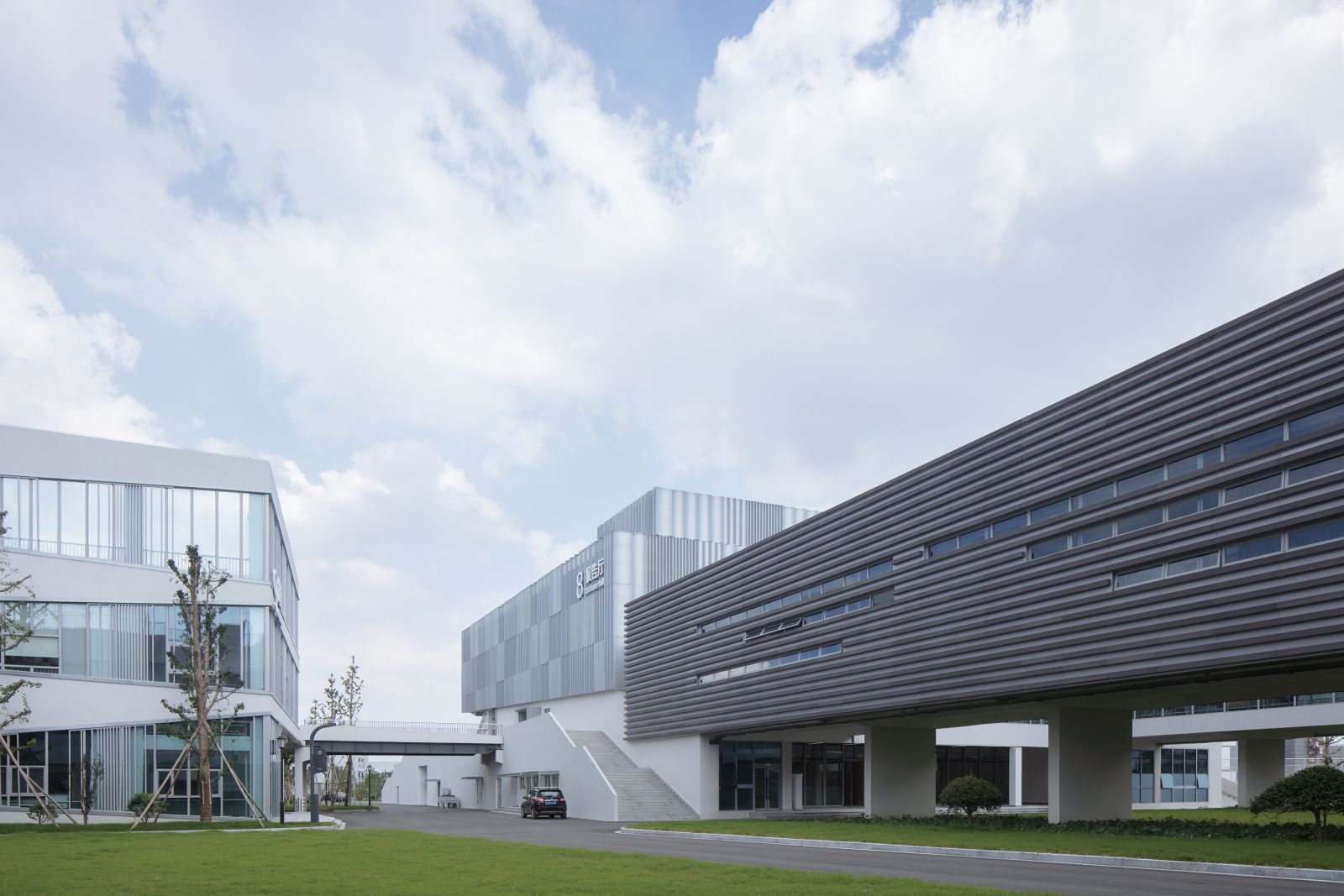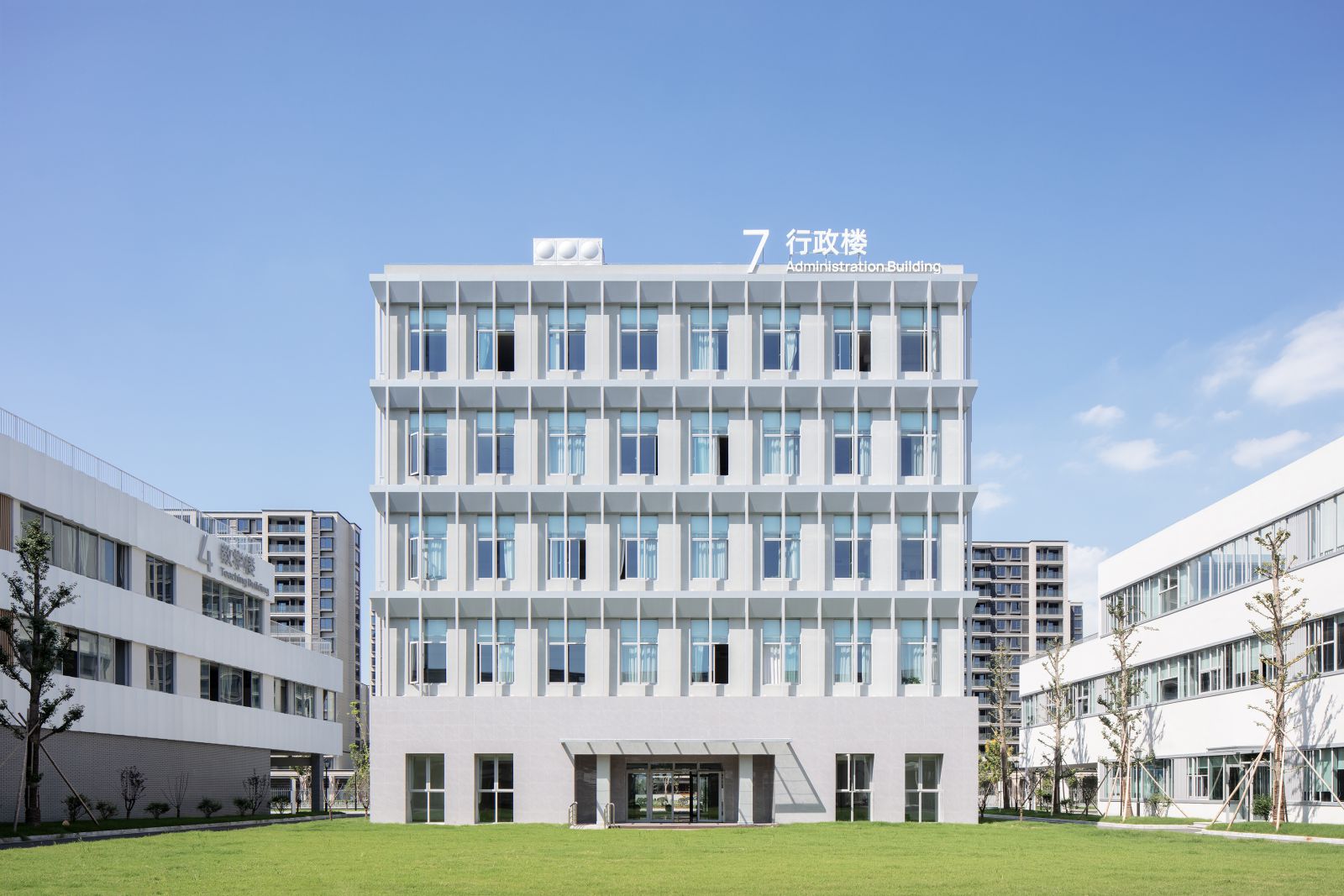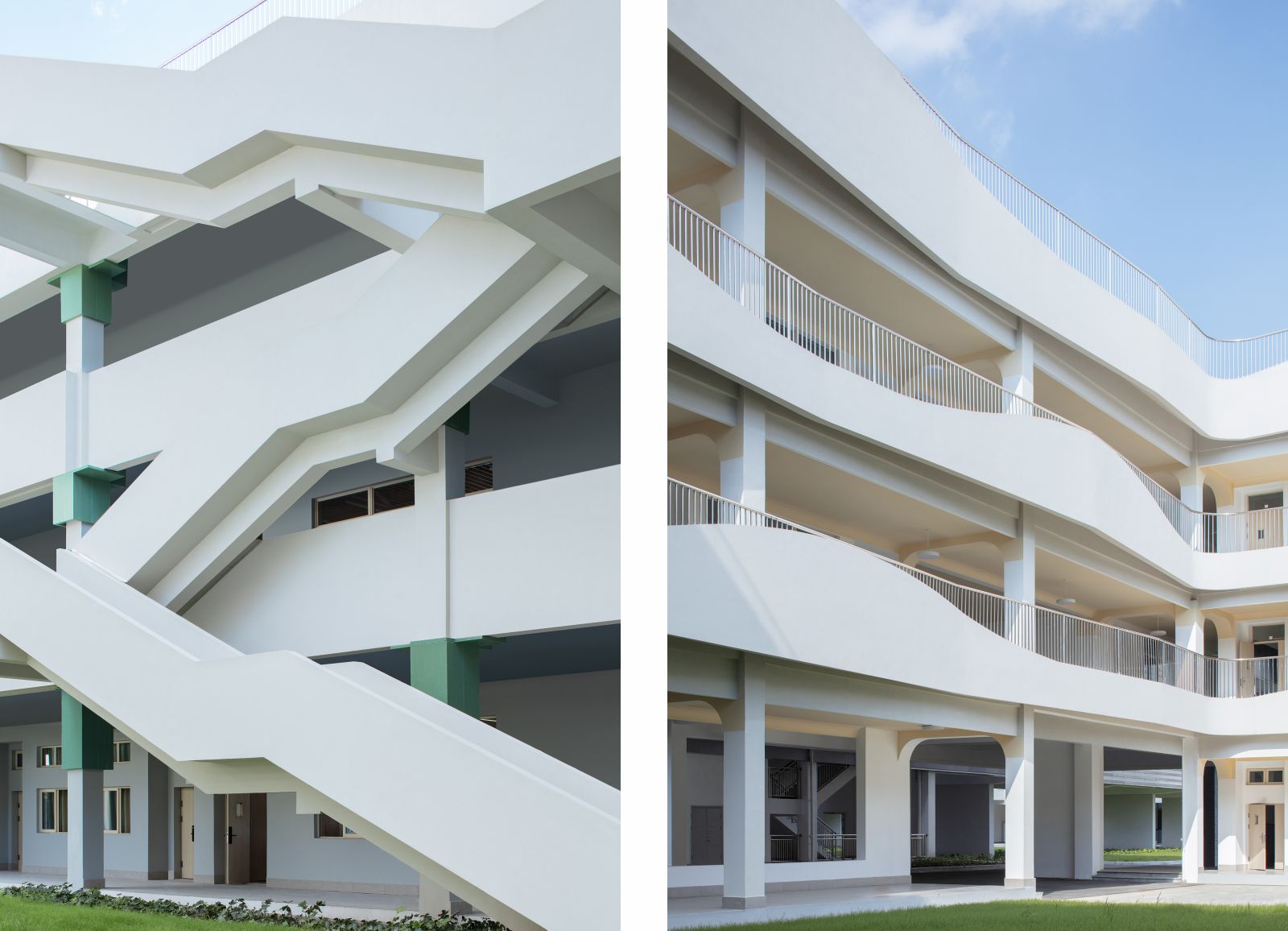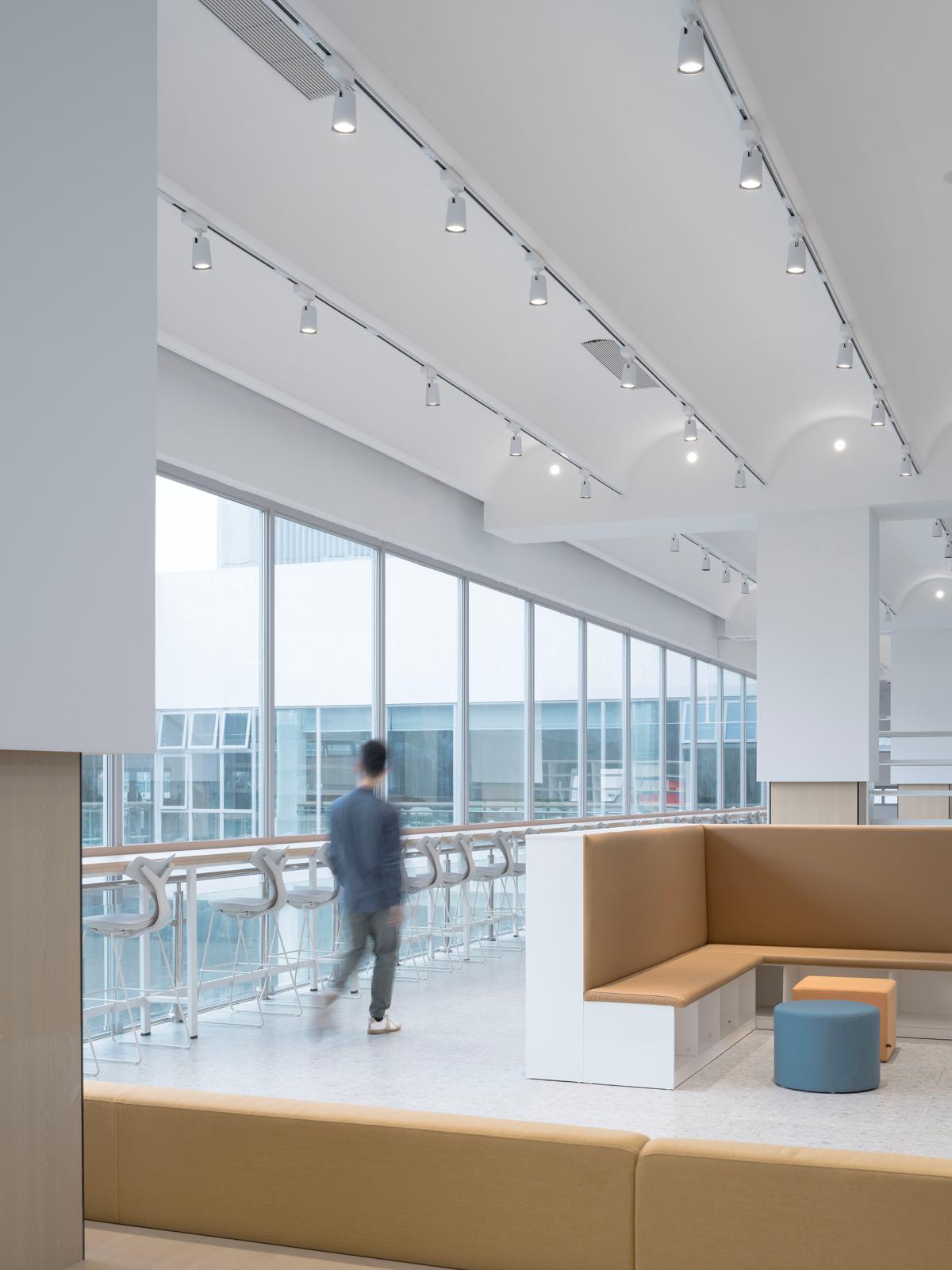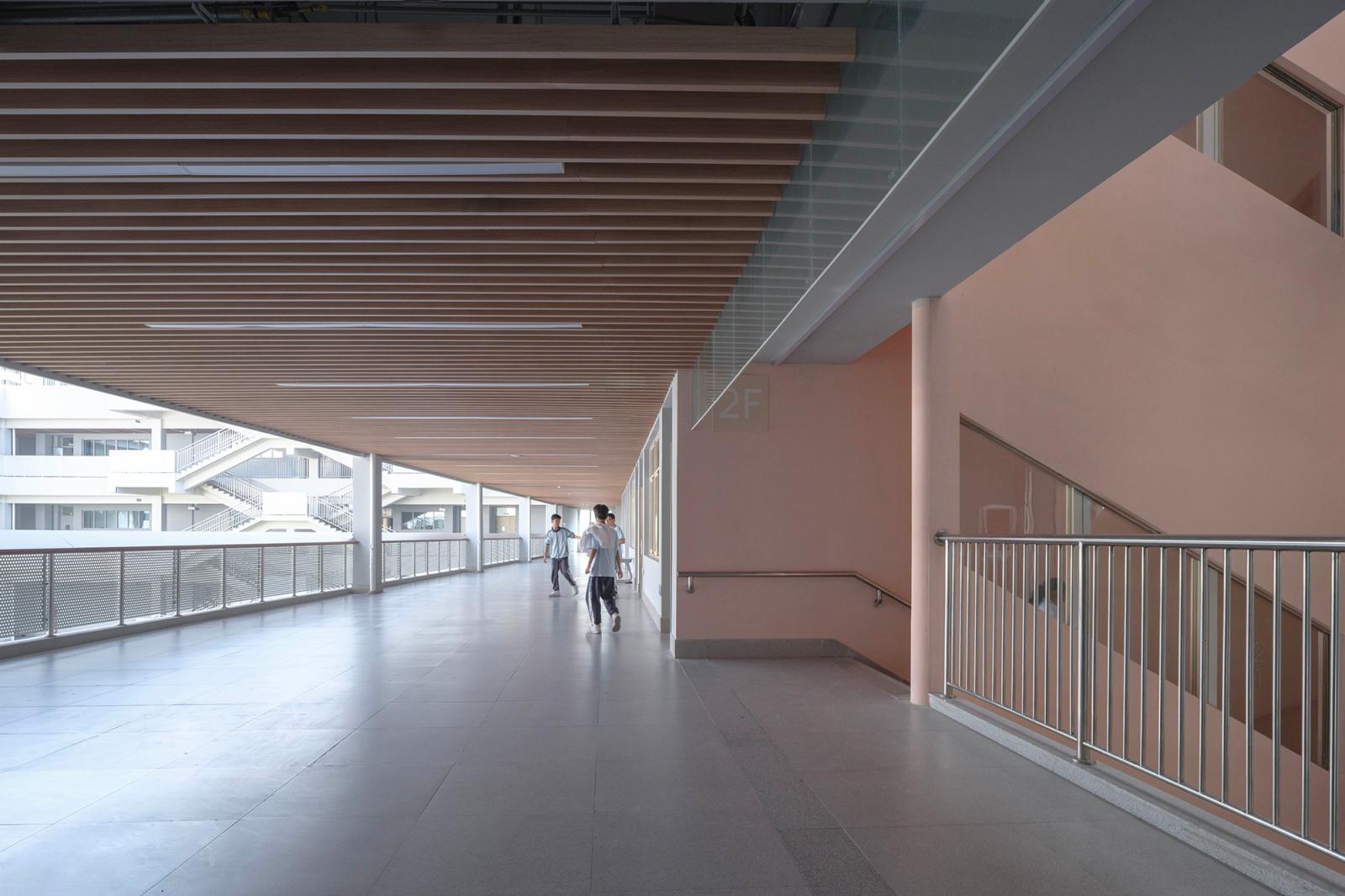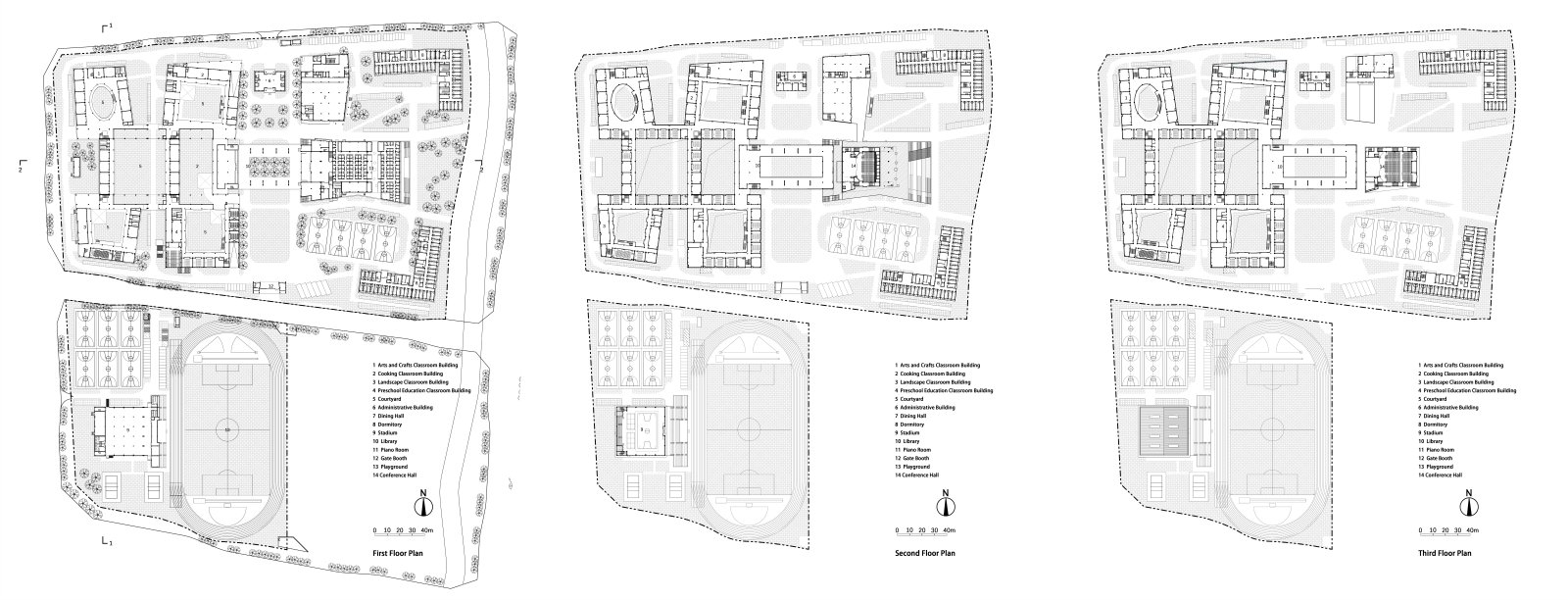Students are the directors of their own daily encounters and plot developments on campus, devising their narratives through choosing different paths to take. Instead of imposing a preconceived coherence, the design embraces multi-authorship in the daily use of the school to stimulate the improvisational, the indeterminate, and the multiplicity of meanings.
Project Overview
Ningbo Gulin Vocational High School is a new campus that accommodates 3,000 students distributed across 75 classes, spanning four specialized departments: preschool education, culinary arts, arts and crafts, and e-commerce. Situated in Ningbo’s Haishu District, China, the project encompasses two distinct plots, with a combined land area of approximately 96,851 square meters.
Concept & Challenges
In contrast to the conventional classroom layout in general high schools, vocational high schools demand the building of a substantial number of vocational training rooms alongside standard classrooms. Students must navigate between various classrooms in different departments efficiently, necessitating an efficient circulation design on both horizontal and vertical levels to facilitate the intense traffic between diverse areas of specialization and functions.
Mille-Feuille : Mat Urbanism and Non-Orthogonal Courtyard
The project challenges the traditional notion of an efficient construction system in China, which typically follows an orthogonal 8.4m x 8.4m grid. Instead, we explored alternative spatial configurations using mat courtyard typology in a non-orthogonal grid system.

This allows various programs to be interlinked in a more efficient and organic way and offer students and teachers a more convenient pedestrian experience. On the ground floor, the vocational training rooms with lower lighting requirements are placed in an open framework to accommodate flexible layouts over time.
On the second and third floors, standard classrooms are clustered around different inner courtyards to receive optimized lighting and views. Additionally, in between the standard classrooms and vocational training rooms, various informal teaching spaces link various departments together to foster multidisciplinary interaction.

“LOOPS” – Non-Orthogonal Courtyard+Mat Topology
The interconnections of the internal courtyards not only improve the efficiency of on-campus traffic but also foster interdisciplinary communication and collaboration. Furthermore, the internal courtyards within various educational spaces are marked by their unique flooring, color palettes, material choices, vertical design elements, and spaces.
These elements serve as visual markers and contribute to distinct place-making spatial experiences, helping students find their way around the campus without falling into a monotonous routine. By creating multiple courtyards with diverse attributes and functions, the design constructs a microcosmic city that can enable a multitude of events, spaces, and stories, transforming the traditional closed teaching model into an open and engaging narrative.

Roaming Map – Continuous Loop System
The second level of the school is interconnected through a continuous loop system, enabling covered access from the auditorium, library, and classrooms to the courtyards. Furthermore, all departments within the school are interlinked through courtyards, facilitating cross-disciplinary interactions, and ensuring efficient circulation.
Various landscapes, combining water reflecting pool, rooftop gardens, and courtyard gardens, create a diverse learning environment. The continuous loop system connects indoor and outdoor spaces, ensuring all-weather accessibility and enhancing the experience for social activities and informal learning. Shared corridors and landscaped courtyards enable students to experience seasonal changes between classes.

“Skin Configuration” – Order and Variation in Facade Design
The building façade reflects both continuity of the campus and differentiation between various functions. The undulating GRC panels of the classrooms and perforated aluminum panels of the auditorium are grouped in various ways to create dynamic façades under different lighting conditions.
Each façade incorporates three modular units of various curvatures, carefully arranged in a systematic yet randomized configuration, allowing perceived continuity on the façade with local variations. Source by ARCHIS Design Studio.
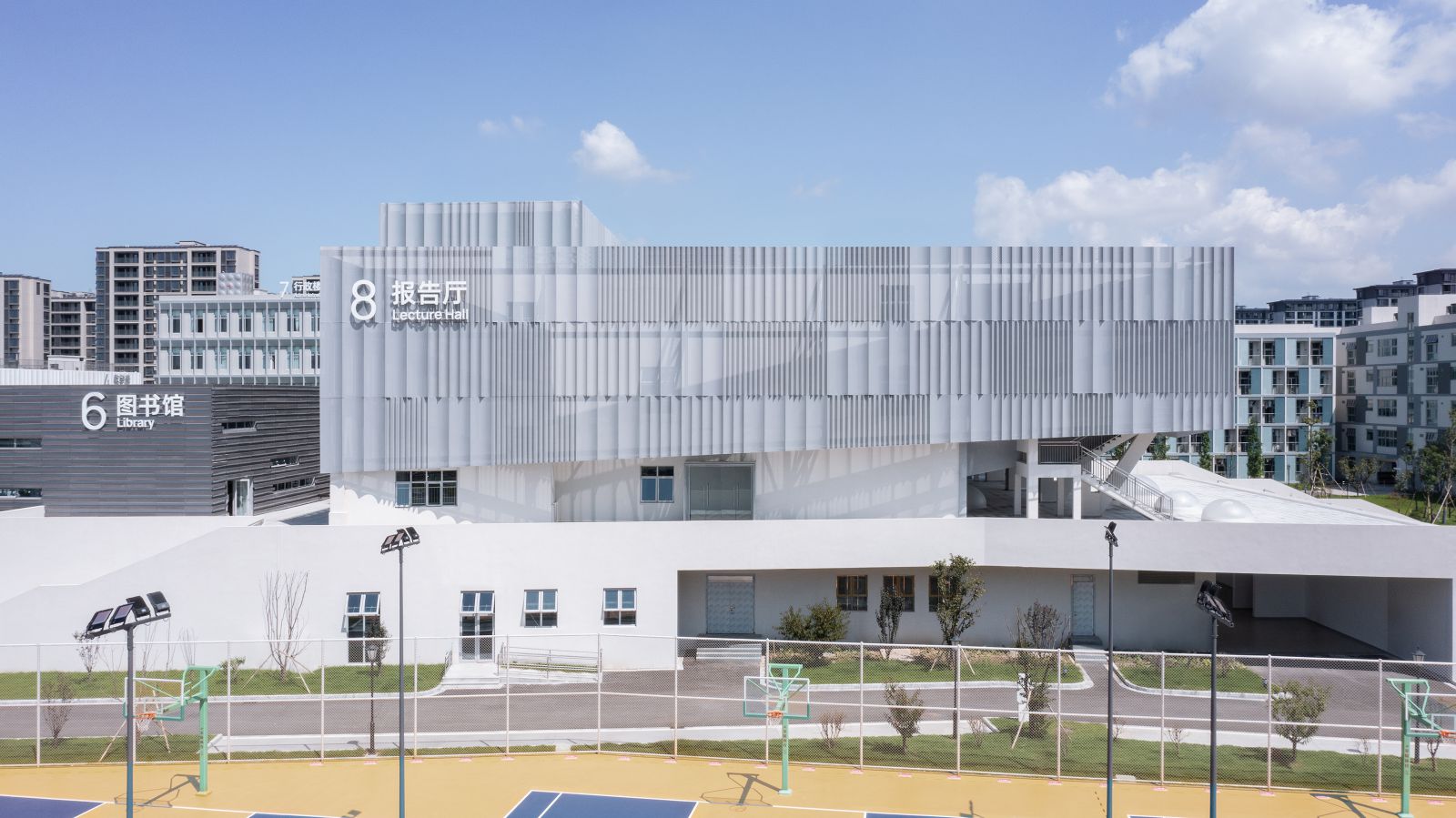
- Location: Ningbo, China
- Architect: ARCHIS Design Studio
- Founder and Principal Architect: Shining (Christina) Sun
- Lead Design Team: Shining (Christina) Sun, Zirui (Allen) Pang, Yotam Ben-Hur, Yuzhou Peng, Yiqing Wu
- Design Team: Xun Lu, Yalun Li, Guangwei Ren, Liding Fan, Jiahao Shi, Xinyao Xiao
- Collaboration: Zhejiang Xinjie Construction Co., Ltd. (Hao Zhang, Liangjun Chen, Ming Luo, Yifei Pan, Xin Luo, Tianqian Zhu, Huili Liang, Linghang Li, Yuanwang Zhu)
- Courtyard Corridor Co-design and Interior Design: Supercloud Studio: Xunjun Xu, Ruobei Gan, Zhibin Zhang, You You, Meng Xue, Yuqing Yang
- Dormitory and Gymnasium Interior Co-design: Kangyi Shen Studio (Kangyi Shen, Zhuozhi Xiong, Xijin Zeng)
- Interior Construction Drawing: Wei Chen, Liyuan He
- Landscape Design: Feng Liu, Sheng Cao
- Facade Consultant: Chuanxing Jiang, Jun Wang
- Lighting Design Consultant: Lei Pang
- Signage Design: SURE Design
- LED Panel: Unilumin
- Monitoring System: Dahua Technology
- Client: Ningbo Gulin Vocational High School, Ningbo Education Bureau
- Site Area: 96,851 m2
- Building Area: 80,000 square meters
- Year: 2023
- Photographs: Xiazhi, Runzi Zhu, Courtesy of ARCHIS Design Studio
